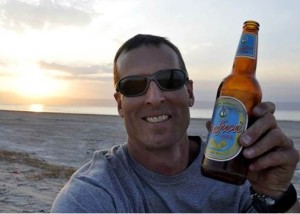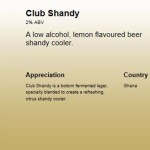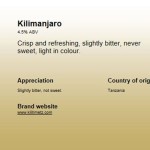
The consumption of alcohol on the continent of Africa ranks amongst the lowest globally, but as Africa’s continental economy grows, it appears that this trend is rapidly changing.
Dr. Brian Hesse, a political scientist at Northwest Missouri State University, chronicles the economic shift that has prompted the growth in beer consumption.
Dr. Brian Hesse is an Associate Professor of Political Science in the Department of Humanities and Social Sciences at Northwest Missouri State University. Books of his include the edited Somalia: State Collapse, Terrorism and Piracy and The United States, South Africa and Africa: Of Grand Foreign Policy Aims and Modest Means. Articles of his have appeared in African Studies Review, the Journal of Contemporary African Studies, Current History, International Journal, Journal of Asia-Pacific Affairs, and other publications. Dr. Hesse is also a seasonal African Safari Guide and owner of Cowabunga Safaris.
Brian Hesse – Chibuku and Growing Rates of African Beer Consumption
My research shows that Africans are at the lowest end of global beer consumption, consuming a mere nine liters of commercially-made beer per person, per year on average. This compares to beer drinkers in North America and Europe who consume some 70 liters of beer per capita annually (Planting 2013). At the same time, Africa is the world’s fastest growing continent economically. Already one in three Africans has reached middle class status, and this group’s ranks will swell by some 50 percent in the next decade (Dalby 2013). These realities have grabbed the attention of some of the world’s largest brewers.
SABMiller is the world’s second-largest brewer after Anheuser-Busch-Inbev (Walsh 2013). The multinational corporation has breweries in 37 African countries, producing or distributing some 36 branded “African beers,” from St. Louis beer in Botswana to Zambezi Lager in Zimbabwe (SABMiller 2013). Among these brands is one called “Chibuku.”
Chibuku as a traditional alcoholic drink has been brewed and consumed in African villages and huts for millennia. SABMiller commercialized and branded the drink, packaging it in cardboard cartons. Drinkers usually give cartons vigorous shakes before peeling them open. The shaking is necessary to mix Chibuku’s ingredients, which tend to separate into a milky liquid on top and a yogurt-like paste on the bottom. The drink represents a straightforward, corporate logic: start customers drinking lumpy Chibuku. Then convince them to trade up to more-profitable offerings.
Multinational giants Heineken and Castel, along with SABMiller, collectively account for over 81 percent of all commercial beer sales in Africa today. Yet the median age in Africa is a youthful 19.7 years (The Economist 2012c), and African consumers are expected to increase their commercial beer consumption by some 4.6 percent per year for the foreseeable future.
This is double the global rate and faster than any other region of the world (Sonne, Maylie and Hinshaw 2013) – an intoxicating reality for many.






